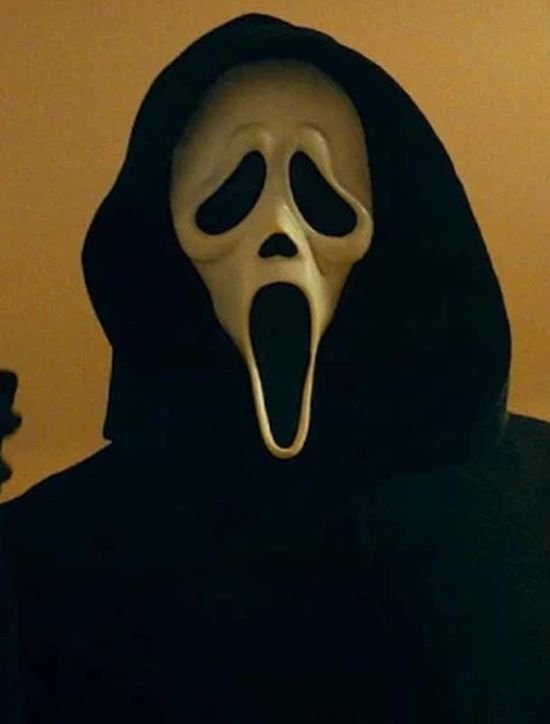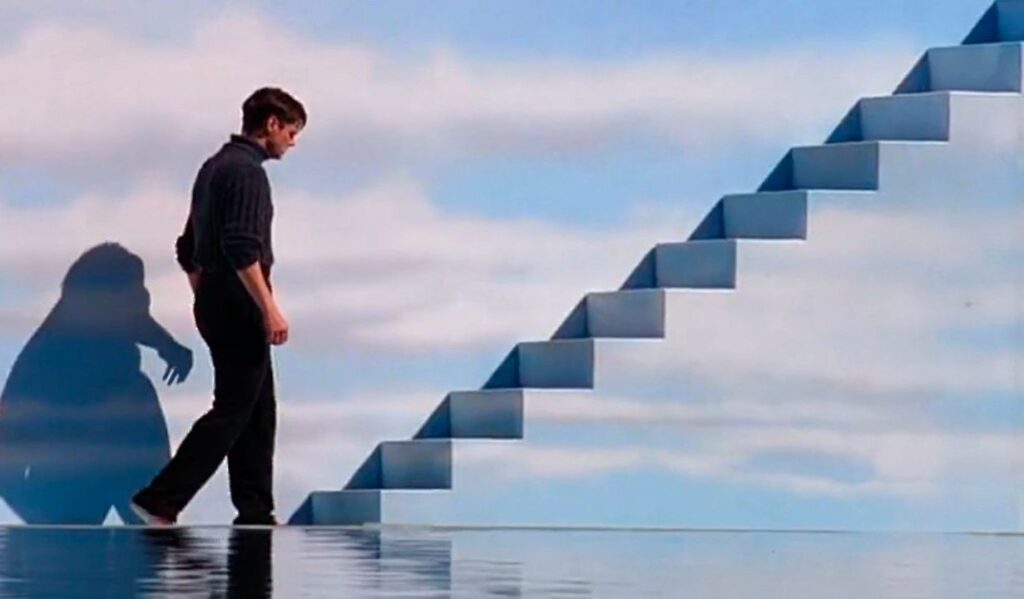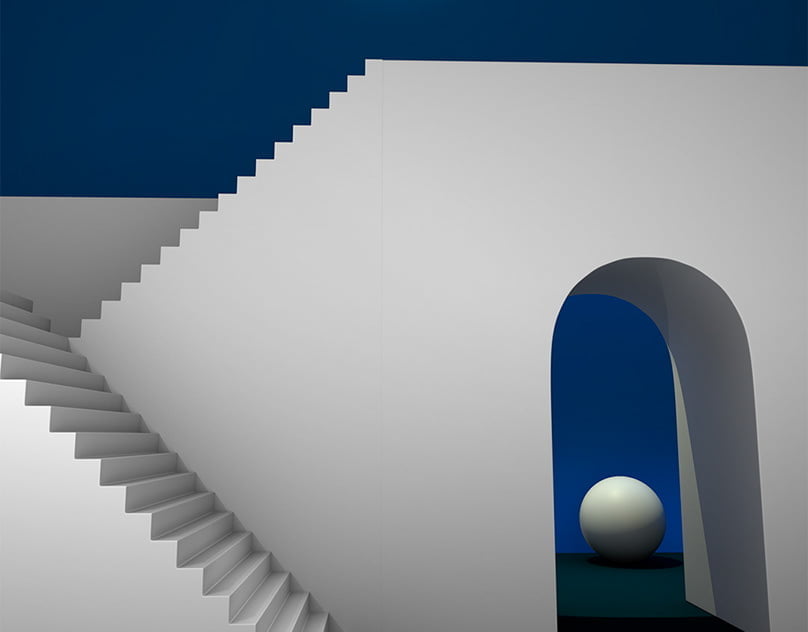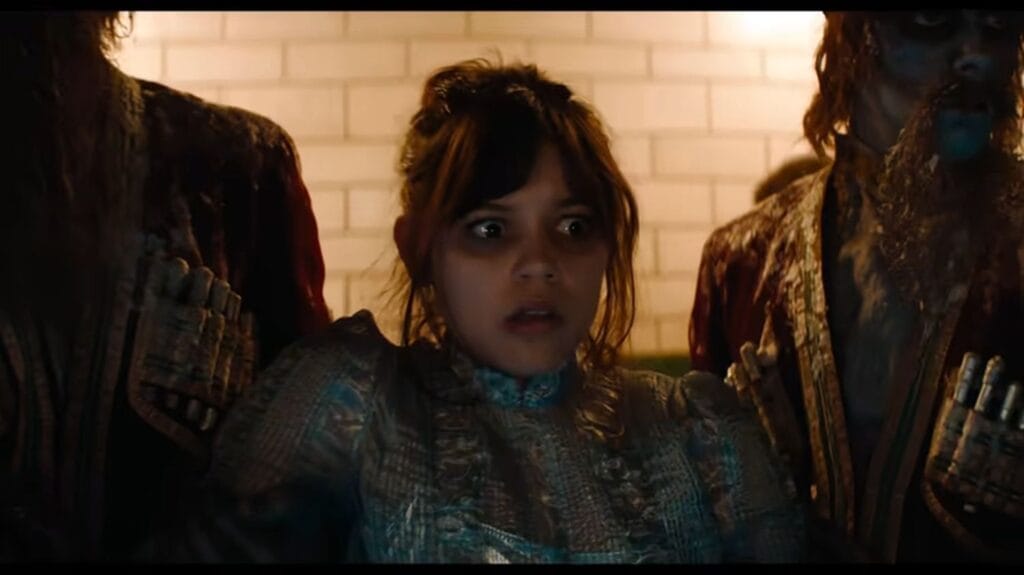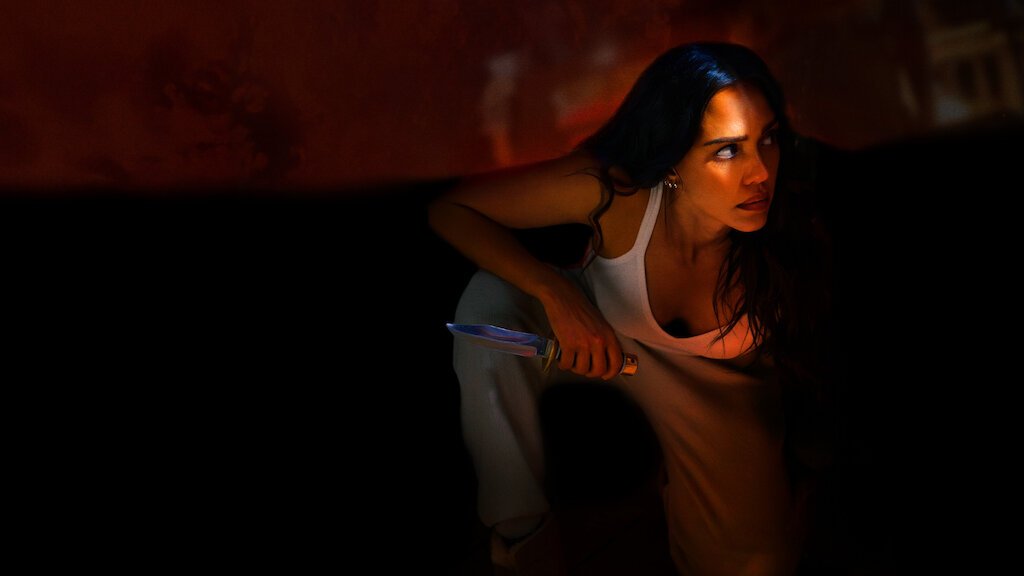Logman Gallery’s Inspiring Connection: When Famous Artworks Inspire Iconic Movie Scenes
Art and cinema have always had a close relationship, with many filmmakers taking inspiration from famous works of art. The use of paintings as a visual reference has become a common practice in film, with many directors employing this technique to create memorable scenes. In this article, we will explore the fascinating world of paintings inspired film scenes.
The Shining by Stanley Kubrick and Diane Arbus’ Identical Twins

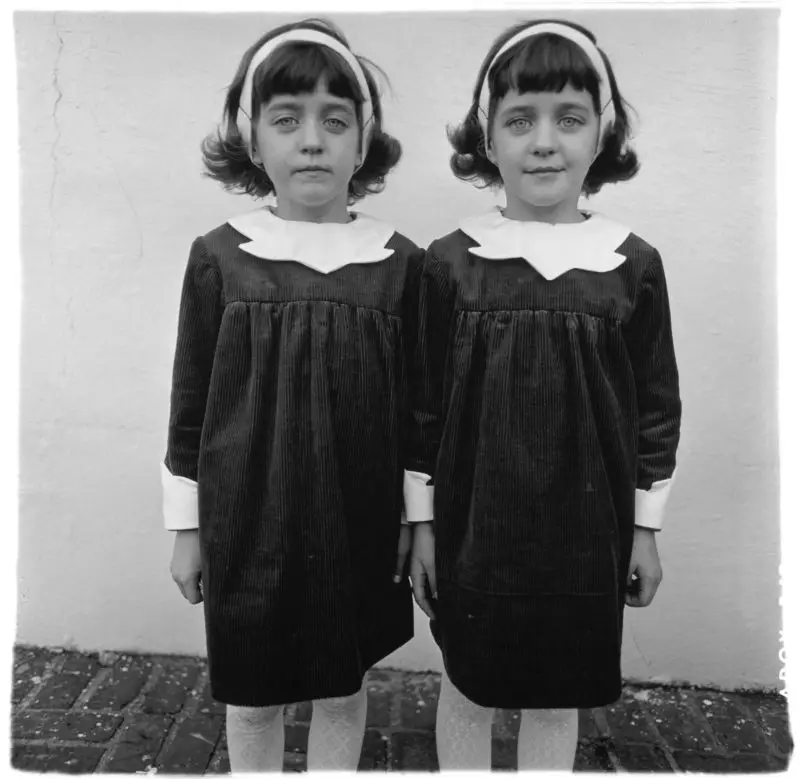
Stanley Kubrick’s The Shining is a horror classic that has become famous for its iconic scenes. One of the most memorable scenes in the movie is when Danny encounters the Grady Twins in the hallway of the Overlook Hotel. The twins are dressed identically, and their eerie presence is enough to make anyone’s skin crawl. The scene is heavily inspired by the photography of Diane Arbus, specifically her portrait of identical twins. The use of this image adds an extra layer of creepiness to an already terrifying scene.
Edward Munch’s The Scream in Wes Craven’s Scream
Edvard Munch’s The Scream in Home Alone


Edvard Munch’s iconic painting, The Scream, is one of the most recognizable paintings in the world and it has been seen in countless movies. Sometimes it’s just an imagination, and very likely it’s just an image that it’s seen in the classic Christmas movie Home Alone. Nevertheless, it is at least funny to claim that Kevin McCallister (played by Macaulay Culkin) is imitating the famous pose of the painting Scream. Whether it’s true or not, that decision is left up to you in this case.
Gustav Klimt’s Kiss in Shutter Island by Martin Scorsese
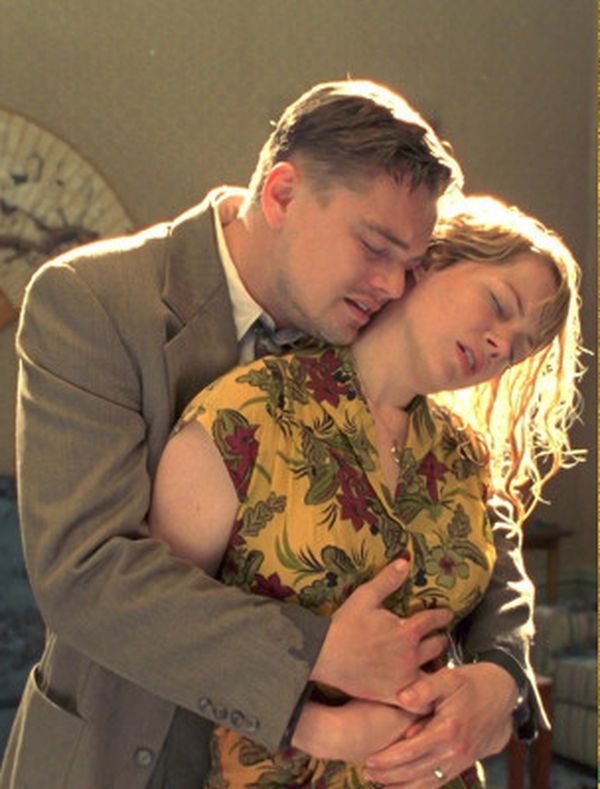

Martin Scorsese’s Shutter Island is a psychological thriller that takes place on a remote island. The story follows two U.S. Marshals who are investigating the disappearance of a patient at a mental institution. As they delve deeper into the mystery, they begin to question their own sanity. One of the most memorable scenes in the movie is when the lead character, played by Leonardo DiCaprio, has a dream about his deceased wife.
This dream sequence is heavily inspired by Gustav Klimt’s Kiss. The painting depicts a couple embracing, and the dream sequence in the movie features the same embrace. The use of Klimt’s painting adds an extra layer of depth to the character’s subconscious desires and emotions.
Vincent van Gogh’s Prisoners Exercising in a Clockwork Orange
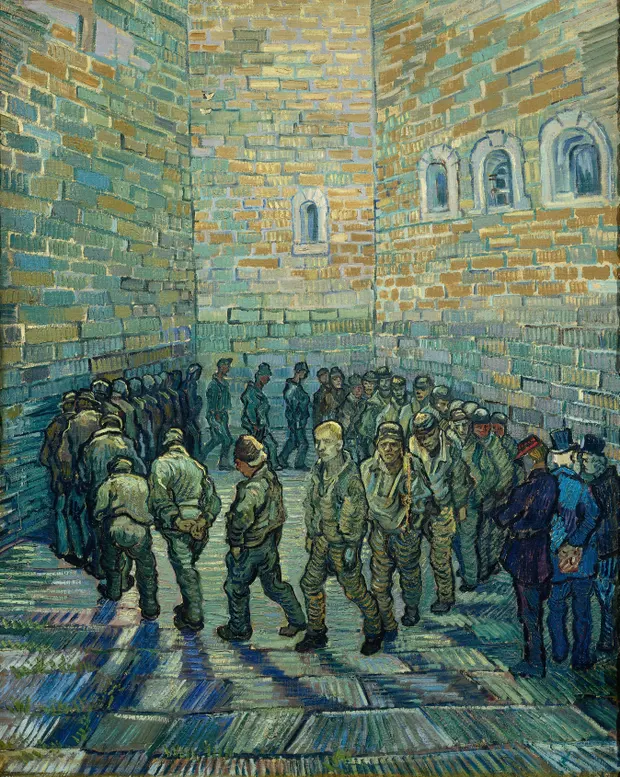

Vincent van Gogh’s painting “Prisoners Exercising” depicts a group of prisoners, viewed from a high angle, as they march around a circular yard in the prison. The painting is notable for its stark, blues and gold blaze color palette and for its representation of the dehumanizing effects of prison life. It has also been referenced in popular culture, including in the 1971 film A Clockwork Orange, directed by Stanley Kubrick.
In the film, the main character Alex undergoes a controversial form of behavior modification to curb his violent tendencies. One scene depicts Alex and other inmates marching in a circle, which is a clear allusion to Van Gogh’s painting “Prisoners Exercising.” The scene reinforces the idea of confinement and the loss of individuality that comes with imprisonment, as well as the idea of the human mind as a kind of machine that can be programmed and controlled. Overall, the reference to Van Gogh’s painting adds depth and complexity to the film’s exploration of the nature of good and evil, and the limits of science and technology in shaping human behavior.
Arnold Böcklin’s The Isle of the Dead in Alien Covenant
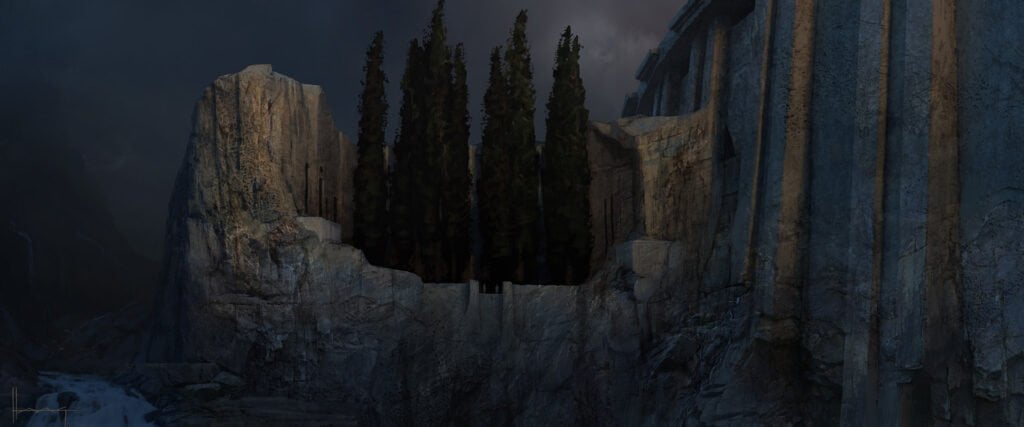

In the movie Alien: Covenant, there’s a shot of a strikingly illuminated rock with tall, thin trees growing on it. This imagery is almost identical to the painting Death Island by Arnold Böcklin, which makes it highly likely that the filmmakers were inspired by the painting. H.R. Giger, one of the original concept artists for Alien, also did a couple of different versions of this painting in 1977, which director Ridley Scott may have seen. Moreover, the terrace garden by Wayne Haag that appears in Alien Covenant seems to be a homage to Böcklin’s Isle of the Dead, and that artist’s work was even discussed with Ridley during the production.
“Böcklin’s mysterious Isle of the Dead is one of the most often reproduced paintings in the history of art. It fascinated Lenin and Hitler, Freud and Clémenceau, and inspired both Dali and Scorsese. The painting represents the final journey as described in Greek mythology, as the boatman Charon accompanies the dead to the underworld on the other side of the river Styx.“
ARTE TV
Salvador Dali’s “Dream Caused by the Flight of a Bee Around a Pomegranate a Second Before Awakening” in Spellbound
Salvador Dali’s surrealist painting (with a long name indeed), was used as a visual reference in Alfred Hitchcock’s Spellbound. The painting is used in a dream sequence in the film, and the use of the painting creates a surreal atmosphere that is both haunting and memorable.
Odd Nerdrum’s Dawn in The Cell
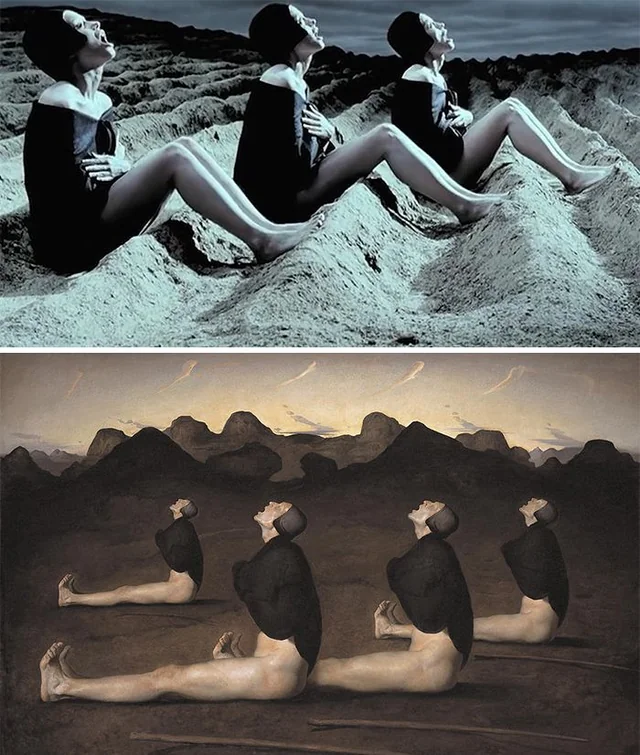
Odd Nerdrum’s painting Dawn (1989) plays a significant role in Tarsem Singh’s The Cell (2000). The film revolves around a child psychologist, Catherine Deane, who uses a high-tech machine to enter the mind of a comatose serial killer in order to save his final victim. In one scene, Catherine enters a surreal landscape in the killer’s mind where she finds a group of men, identical in appearance, sitting in a circle with their faces tilted towards the sky with open mouths, and one of them holding a bowl with water. This scene is a direct reference to Nerdrum’s Dawn, which depicts four identical men in a barren landscape, sitting with their faces turned upwards towards the sky with open mouths, and dressed in identical clothing with skullcaps and leather wrapped around their shoulders [1][2]. The painting’s surreal and dreamlike atmosphere is perfectly captured in The Cell, with its use of vivid colors, unique compositions, and an almost otherworldly feel.
Hopper’s Nighthawks in Pennies from Heaven

Edward Hopper’s painting Nighthawks is a quintessential example of American art, capturing a moment in time that reflects the alienation and loneliness that can be found in urban life. This painting has inspired many other artists and creators, and it is not surprising that it has been referenced in popular culture. The 1981 movie Pennies from Heaven, directed by Herbert Ross and starring Steve Martin and Bernadette Peters, features a scene that pays homage to Hopper’s masterpiece. The scene in question takes place in a diner, and the set design and lighting perfectly recreate the mood and atmosphere of Hopper’s painting. The use of bold colors and strong contrasts create a sense of tension and unease, just like in Nighthawks. The characters in Pennies from Heaven, just like the figures in Hopper’s painting, are isolated and alone in their thoughts, yet together in the physical space of the diner. The scene is a poignant tribute to Hopper’s enduring legacy and his ability to capture the essence of the human condition.
Squid Game and M.C. Escher’s Relativity

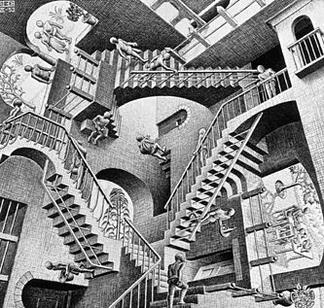
The popular Netflix series Squid Game has been praised for its intricate set design and attention to detail. One of the most notable references in the show is to M.C. Escher’s Relativity, a print that uses an impossible staircase to create a mind-bending optical illusion. The set designers of the show used the same idea to create an impossible staircase that plays a significant role in the show’s plot. The staircase adds to the overall surreal feeling of the show, and its resemblance to Escher’s work has not gone unnoticed.
The Blue Boy and Django Unchained
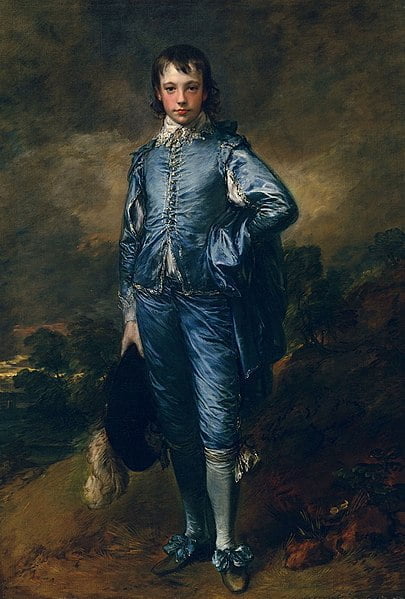

Quentin Tarantino’s Django Unchained is a Western revenge film that takes place in the antebellum South. The movie’s protagonist is a slave named Django who is on a mission to rescue his wife from a cruel plantation owner. This scene ina the image above is heavily inspired by Thomas Gainsborough’s The Blue Boy. The use of this painting adds an extra layer of irony to the scene, as Django, a former slave, is dressed in the same manner as his former oppressors.
Vincent van Gogh’s The Starry Night in Midnight in Paris
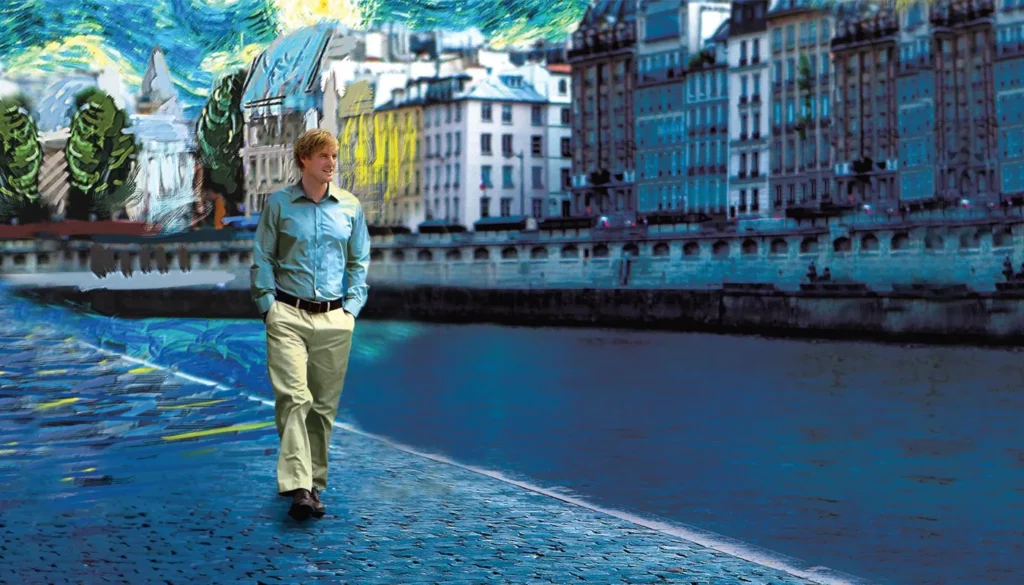
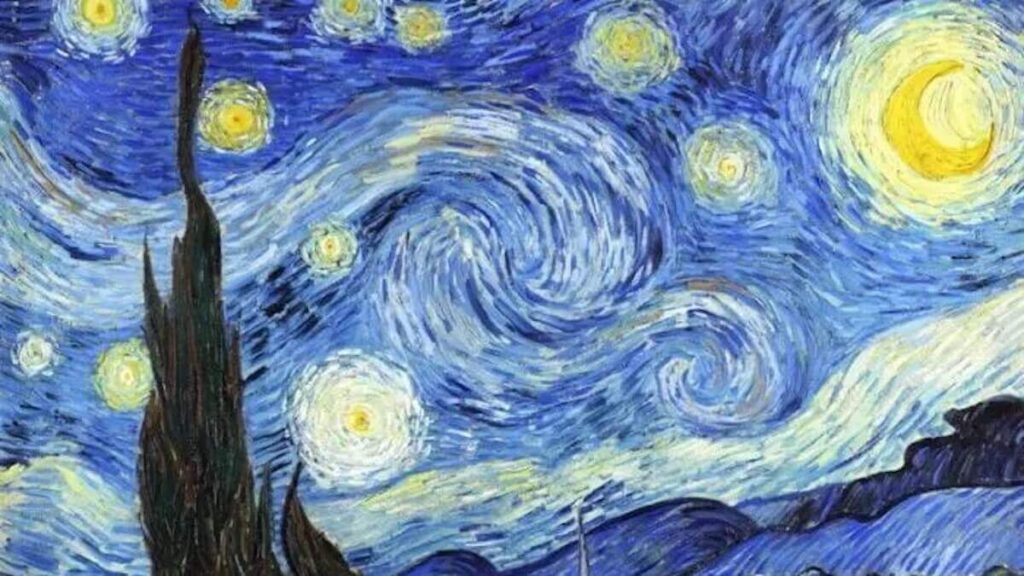
Woody Allen’s Midnight in Paris Poster features a scene that pays homage to Vincent van Gogh’s famous painting, The Starry Night. The scene features Owen Wilson’s character, Gil Pender, walking down a street in Paris, and as the camera pans, the scene transforms into a live-action version of The Starry Night. The use of this painting creates a dreamlike atmosphere that perfectly captures the film’s whimsical tone.
The Birth of Venus and The Adventures of Baron Munchausen


Terry Gilliam’s The Adventures of Baron Munchausen is a fantasy film that takes place in the late 18th century. The movie follows the exploits of the titular character as he travels through space and time. One of the most memorable scenes in the movie is when Venus emerges from the sea. This scene is heavily inspired by Sandro Botticelli’s The Birth of Venus. The use of this painting adds an extra layer of beauty to an already stunning scene.
Squid Game and Judy Chicago’s The Dinner Party

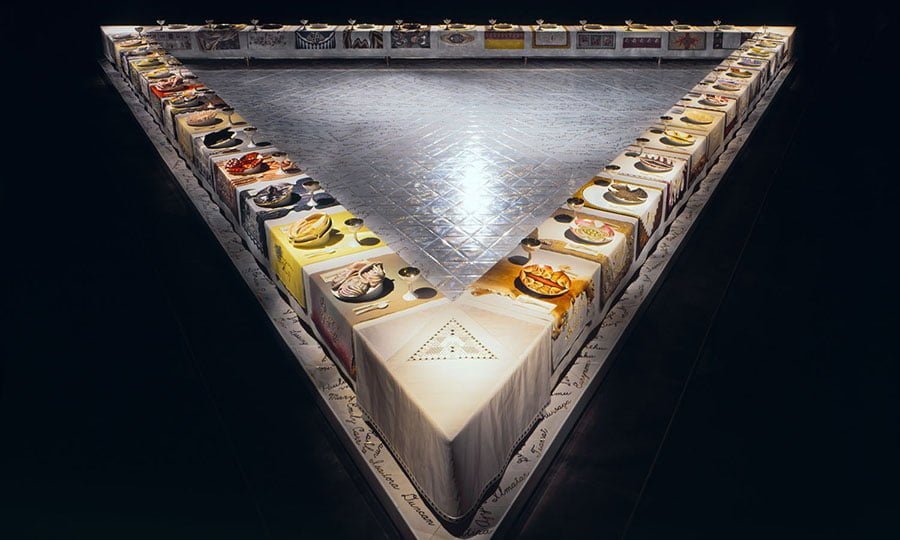
The eerie dinner scene in Squid Game takes place at a triangular table, reminiscent of Judy Chicago’s famous artwork The Dinner Party. The triangular table and white tablecloths are strikingly similar to the installation, which pays homage to the many women who have contributed to human history across a variety of fields and disciplines. The Dinner Party features 39 place settings with special plates commemorating women like Georgia O’Keeffe, Virginia Woolf, and Sojourner Truth. The installation’s base is made of porcelain and engraved with the names of 999 women. Just as Squid Game’s dinner scene is a twisted display of power, Chicago’s installation was a powerful statement on the marginalization of women in history and society
Magritte’s Moonlit Architecture in The Truman Show
In the iconic film The Truman Show, the character Truman Burbank, played by Jim Carrey, gradually realizes that his life is an elaborate reality TV show. In one memorable scene, Truman confronts his creator and tries to exit his fabricated world by ascending a white staircase that leads to an apparent exit. This scene echoes the surrealist painting “Architecture au clair de lune” by René Magritte, which features a similar white staircase extending upwards into an infinite void. The painting’s dreamlike atmosphere and sense of infinite possibility create a powerful connection to the scene in The Truman Show, as Truman confronts the limitations of his own reality and seeks a way to transcend them. Both the painting and the film challenge our assumptions about the nature of reality and encourage us to question the structures that shape our lives.
La Mort de Marat in About Schmidt
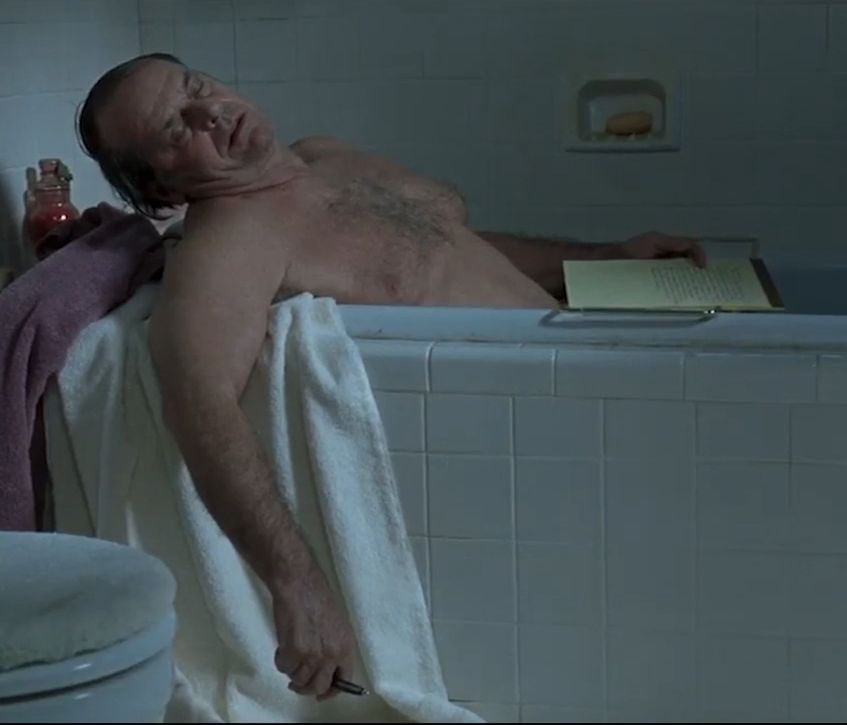

In the movie “About Schmidt,” there is a shot of Warren Schmidt, the main character, in his bathtub similar to Jacques-Louis David’s painting “The Death of Marat”. The shot is a reference to the painting which depicts the radical journalist Marat lying dead in his bathtub after his murder by Charlotte Corday. The painting is a significant work of Neoclassical art, with Marat’s quill still in his hand and the blood-soaked bathtub providing a dramatic effect. The use of this shot in “About Schmidt” adds to the character’s sense of isolation, much like Marat in the painting, and highlights the artistry of the film in creating meaningful visual connections to art history.
Mantegna’s The Lamentation of Christ in The Return by Andrey Zvyagintsev
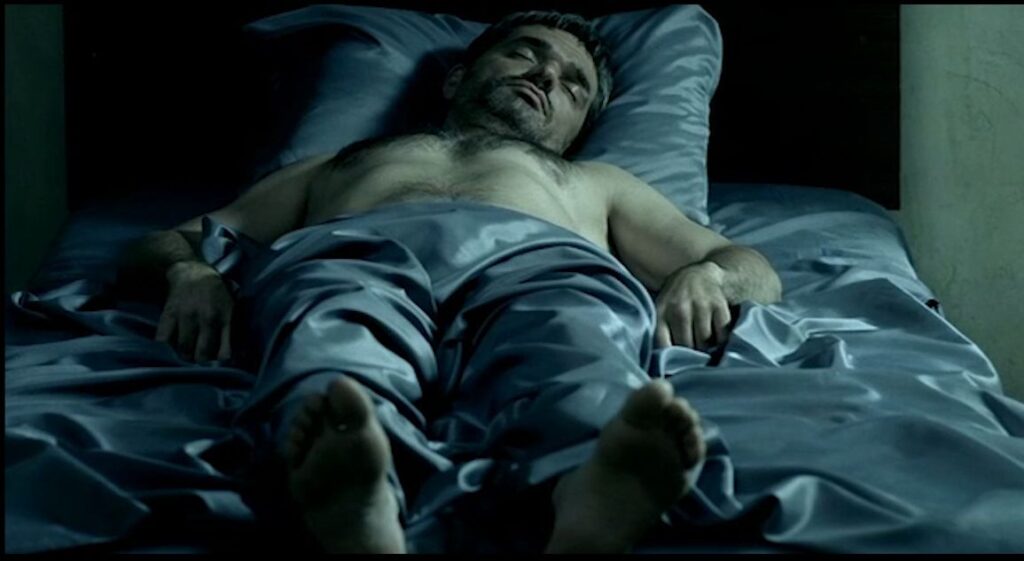

In the 2003 film, The Return, directed by Andrey Zvyagintsev, there is a scene where the father is depicted sleeping in a position that greatly imitates the dead Christ in Andrea Mantegna’s painting, The Lamentation Over the Dead Christ (c. 1480). The painting depicts the body of Christ, lying on a marble slab with his arms crossed, surrounded by mourning figures. Similarly, in the film, the father is shown lying on a bed with his arms crossed over his ches.
The similarity between the two can be seen as a reference to the theme of resurrection, which is a common motif in the Christian tradition. The painting portrays the resurrection of Christ, whereas in the film, the father’s return after a long absence could be interpreted as a form of resurrection. The use of this painting in the film could also suggest the influence of religious imagery on the director’s work, as well as a deeper exploration of themes such as mortality and redemption. Overall, the connection between Mantegna’s Lamentation of Christ and The Return by Andrey Zvyagintsev highlights the use of art as a source of inspiration and reference in the cinematic medium.
Crows Over Wheat Field by Vincent Van Gogh in Dreams of Akira Kurosawa

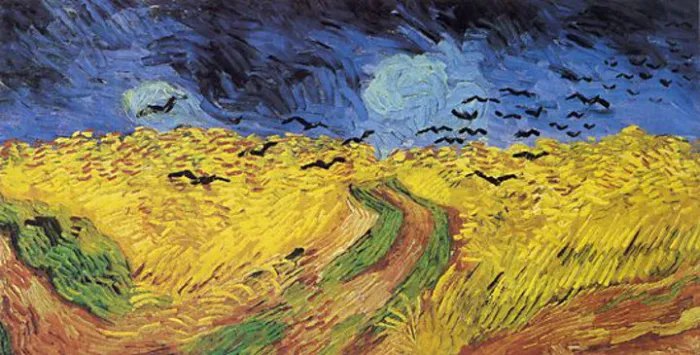
Akira Kurosawa’s Dreams is a celebration of the director’s imaginative and artistic vision. The film features eight vignettes that delve into Kurosawa’s dreams, creating a surreal and symbolic exploration of his own experiences. Each dream is a visual spectacle with references to the art world, other filmmakers, and literary works. One such reference is the presence of Van Gogh’s art throughout the film, paying tribute to the great painter and his works. With the appearance of Martin Scorsese, Kurosawa brings Van Gogh to the screen, highlighting the impact that art can have on cinema.
Crows Over Wheat Field, which is referenced in the film, is one of Van Gogh’s most significant works, depicting a solitary figure in a desolate landscape. In Dreams, Kurosawa draws on the powerful imagery of this work to create a haunting and moving tribute to one of the most influential artists of all time.
Honoring the Interplay of Art and Cinema at Logman Gallery
The connections between visual arts and cinema have long fascinated creatives and audiences alike. The Logman Gallery has inspired us to explore this interplay by showcasing how iconic movie scenes have been influenced by famous artworks. Although the gallery itself does not specifically focus on this aspect, our article has shown that the conversations between these two art forms are ever-present and offer endless possibilities for inspiration and interpretation. We hope that this exploration has piqued your interest in both the original artworks and the movies they have influenced, and that you will visit Logman Gallery to discover more exciting art and cultural events

